-
 Bitcoin
Bitcoin $107,352.1067
0.28% -
 Ethereum
Ethereum $2,429.3531
-0.90% -
 Tether USDt
Tether USDt $1.0001
-0.02% -
 XRP
XRP $2.1894
4.62% -
 BNB
BNB $646.7968
0.36% -
 Solana
Solana $147.4290
4.03% -
 USDC
USDC $0.9998
-0.02% -
 TRON
TRON $0.2756
1.52% -
 Dogecoin
Dogecoin $0.1630
1.14% -
 Cardano
Cardano $0.5612
1.18% -
 Hyperliquid
Hyperliquid $37.0580
-0.05% -
 Bitcoin Cash
Bitcoin Cash $496.9410
-0.09% -
 Sui
Sui $2.7318
3.19% -
 Chainlink
Chainlink $13.1503
0.58% -
 UNUS SED LEO
UNUS SED LEO $9.0766
0.55% -
 Avalanche
Avalanche $17.7220
1.46% -
 Stellar
Stellar $0.2380
1.52% -
 Toncoin
Toncoin $2.8439
0.38% -
 Shiba Inu
Shiba Inu $0.0...01143
1.84% -
 Litecoin
Litecoin $85.8053
1.47% -
 Hedera
Hedera $0.1483
2.70% -
 Monero
Monero $314.3240
2.12% -
 Bitget Token
Bitget Token $4.6725
0.77% -
 Dai
Dai $1.0000
0.00% -
 Polkadot
Polkadot $3.3555
1.28% -
 Ethena USDe
Ethena USDe $1.0001
0.02% -
 Uniswap
Uniswap $7.0890
2.64% -
 Pi
Pi $0.5355
-3.40% -
 Pepe
Pepe $0.0...09393
1.06% -
 Aave
Aave $256.8136
-1.90%
What are the digital currency trading platforms? How to choose a reliable one?
Choose a reliable digital currency trading platform by evaluating security, regulation, liquidity, user experience, fees, and cryptocurrency variety for a safe trading experience.
May 13, 2025 at 06:15 am
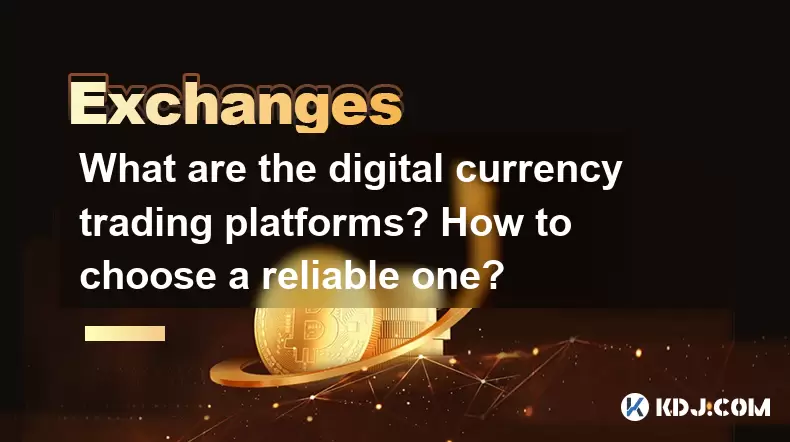
Digital currency trading platforms, commonly known as cryptocurrency exchanges, are online platforms where users can buy, sell, and trade various cryptocurrencies. These platforms serve as the primary gateway for individuals and institutions to enter the world of digital assets. Given the proliferation of these platforms, choosing a reliable one is crucial for safeguarding your investments and ensuring a smooth trading experience.
Types of Digital Currency Trading Platforms
There are several types of digital currency trading platforms, each catering to different needs and preferences of traders.
- Centralized Exchanges (CEX): These are run by a central authority and are the most common type. Examples include Binance, Coinbase, and Kraken. They offer a wide range of cryptocurrencies and often provide advanced trading features.
- Decentralized Exchanges (DEX): These operate on blockchain technology without a central authority. Users trade directly with one another, maintaining greater control over their funds. Examples include Uniswap and SushiSwap.
- Hybrid Exchanges: These combine features of both centralized and decentralized exchanges, aiming to offer the benefits of both worlds. An example is Nash.
- Peer-to-Peer (P2P) Exchanges: These platforms facilitate direct transactions between users, often without holding custody of the funds. Examples include LocalBitcoins and Paxful.
Key Factors to Consider When Choosing a Reliable Platform
Selecting a reliable digital currency trading platform involves evaluating several critical factors. Here are the key aspects to consider:
- Security: The platform must have robust security measures in place, including two-factor authentication (2FA), cold storage for funds, and insurance against hacks. Look for platforms that have never been hacked or have quickly recovered from any security breaches.
- Regulation and Compliance: A reliable platform should be compliant with relevant regulations in the jurisdictions it operates. Check if the platform is registered with financial regulatory bodies such as the SEC or FCA.
- Liquidity: High liquidity ensures that you can buy or sell assets quickly without significant price slippage. Platforms like Binance and Coinbase are known for their high liquidity.
- User Experience: The platform should be user-friendly, with an intuitive interface and responsive customer support. Test the platform by opening a demo account or using a small amount of funds initially.
- Fees: Trading fees can vary widely between platforms. Compare the fee structures, including maker and taker fees, withdrawal fees, and any other charges.
- Range of Cryptocurrencies: A good platform should offer a wide variety of cryptocurrencies to trade. Ensure the platform supports the assets you are interested in trading.
- Reputation and Reviews: Research the platform's reputation by reading reviews and user testimonials. Look for platforms with a strong track record and positive feedback from the community.
How to Evaluate the Security of a Platform
Evaluating the security of a digital currency trading platform is paramount. Here are the steps to assess the security measures of a platform:
- Check for Two-Factor Authentication (2FA): Ensure the platform supports 2FA for account logins and withdrawals. This adds an extra layer of security to your account.
- Review Cold Storage Practices: Platforms that store the majority of user funds in cold storage (offline) are less vulnerable to hacks. Look for information on their cold storage practices.
- Insurance Coverage: Some platforms offer insurance to cover losses from hacks. Check if the platform has insurance and what it covers.
- Security Audits: Look for platforms that have undergone regular security audits by reputable third-party firms. These audits can provide assurance about the platform's security measures.
- Past Security Incidents: Research any past security breaches and how the platform responded. A platform that has quickly and effectively addressed past incidents may be more reliable.
Steps to Open an Account on a Digital Currency Trading Platform
Opening an account on a digital currency trading platform involves several steps. Here is a detailed guide on how to do it:
- Choose a Platform: Based on your research, select a platform that meets your criteria for security, fees, and user experience.
- Visit the Platform's Website: Navigate to the official website of the chosen platform.
- Sign Up: Click on the "Sign Up" or "Register" button. You will be prompted to enter your email address and create a password.
- Verify Your Email: After signing up, you will receive an email with a verification link. Click on the link to verify your email address.
- Complete KYC (Know Your Customer) Process: Most platforms require you to complete a KYC process to comply with regulations. This typically involves uploading a government-issued ID and a proof of address.
- Enable Two-Factor Authentication (2FA): Go to the security settings and enable 2FA. This can be done using an authenticator app like Google Authenticator or Authy.
- Deposit Funds: Navigate to the deposit section and choose your preferred method of funding your account. This could be via bank transfer, credit card, or cryptocurrency transfer.
- Start Trading: Once your account is funded, you can start trading. Navigate to the trading section, select the cryptocurrency you want to trade, and place your order.
Comparing Fees Across Different Platforms
Fees can significantly impact your trading profits. Here's how to compare fees across different platforms:
- Trading Fees: Most platforms charge a fee for each trade, which can be a percentage of the trade value. Compare the maker and taker fees, as they can differ significantly.
- Withdrawal Fees: Check the fees for withdrawing funds from the platform. These can vary widely, especially for different cryptocurrencies.
- Deposit Fees: Some platforms charge fees for depositing funds, particularly for credit card deposits. Look for platforms that offer free deposits.
- Other Charges: Be aware of any other potential charges, such as inactivity fees or fees for using certain features. Read the platform's fee schedule carefully.
Frequently Asked Questions
Q: Can I use multiple digital currency trading platforms simultaneously?
A: Yes, you can use multiple platforms simultaneously. This can be beneficial for accessing different cryptocurrencies, taking advantage of varying fee structures, and diversifying your trading strategies. However, managing multiple accounts requires careful attention to security and record-keeping.
Q: How do I transfer cryptocurrencies between different platforms?
A: To transfer cryptocurrencies between platforms, you need to follow these steps:
- Withdraw from the Source Platform: Navigate to the withdrawal section of the platform where your cryptocurrencies are currently held. Enter the amount you want to withdraw and the destination address (the receiving platform's deposit address).
- Deposit to the Destination Platform: On the receiving platform, go to the deposit section and select the cryptocurrency you are transferring. You will be provided with a deposit address. Use this address when withdrawing from the source platform.
- Confirm the Transaction: Double-check the destination address and the amount before confirming the withdrawal. Once confirmed, the transaction will be processed on the blockchain, and the funds should appear in your account on the receiving platform within the blockchain's confirmation time.
Q: What should I do if I suspect my account on a trading platform has been compromised?
A: If you suspect your account has been compromised, take the following immediate actions:
- Change Your Password: Immediately change your password to a strong, unique one.
- Enable Two-Factor Authentication (2FA): If not already enabled, turn on 2FA to add an extra layer of security.
- Contact Customer Support: Reach out to the platform's customer support team to report the issue. They can help you secure your account and investigate any unauthorized transactions.
- Monitor Your Account: Keep a close eye on your account for any further suspicious activity and report it immediately.
Q: Are there any platforms that specialize in trading specific types of cryptocurrencies?
A: Yes, some platforms specialize in trading specific types of cryptocurrencies. For example, Bittrex is known for its focus on altcoins, offering a wide variety of lesser-known cryptocurrencies. Bitfinex is popular among traders of Bitcoin and Ethereum, offering advanced trading features for these assets. When choosing a platform, consider whether it specializes in the types of cryptocurrencies you are interested in trading.
Disclaimer:info@kdj.com
The information provided is not trading advice. kdj.com does not assume any responsibility for any investments made based on the information provided in this article. Cryptocurrencies are highly volatile and it is highly recommended that you invest with caution after thorough research!
If you believe that the content used on this website infringes your copyright, please contact us immediately (info@kdj.com) and we will delete it promptly.
- Altcoins, Explosive Gains, and Cryptocurrency: What's the Hype?
- 2025-06-28 21:12:19
- SEI Mirroring Solana: Price Spikes and the Next Big Crypto?
- 2025-06-28 20:52:13
- Pi Network's Pi2Day: Token Tank and Disappointing Rollout?
- 2025-06-28 21:27:13
- PENGU Price Surges: Are Whales Targeting $0.0149?
- 2025-06-28 20:30:12
- Bitcoin Adoption, Portfolio Allocation, and Financial Advisors: A New Era
- 2025-06-28 21:27:13
- Kaanch vs. XRP: Spotting the Next Big Thing & Entry Price Opportunities
- 2025-06-28 21:50:12
Related knowledge
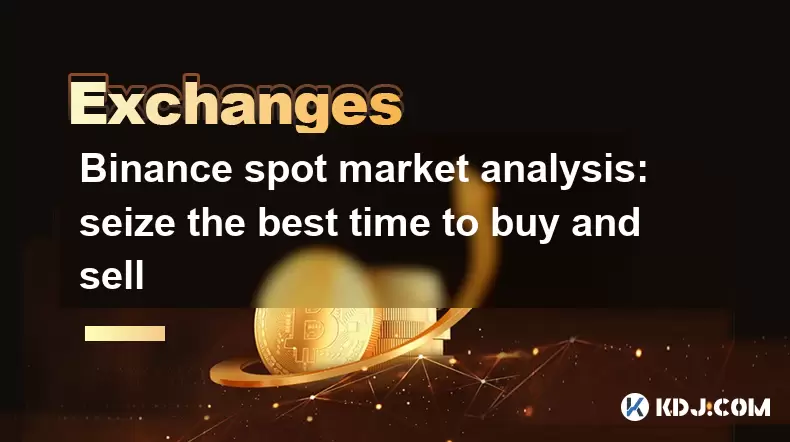
Binance spot market analysis: seize the best time to buy and sell
Jun 19,2025 at 04:56pm
Understanding the Binance Spot MarketThe Binance spot market is one of the most popular platforms for cryptocurrency trading globally. It allows users to trade digital assets at current market prices, making it essential for traders aiming to buy low and sell high. Unlike futures or margin trading, spot trading involves direct ownership of the asset aft...
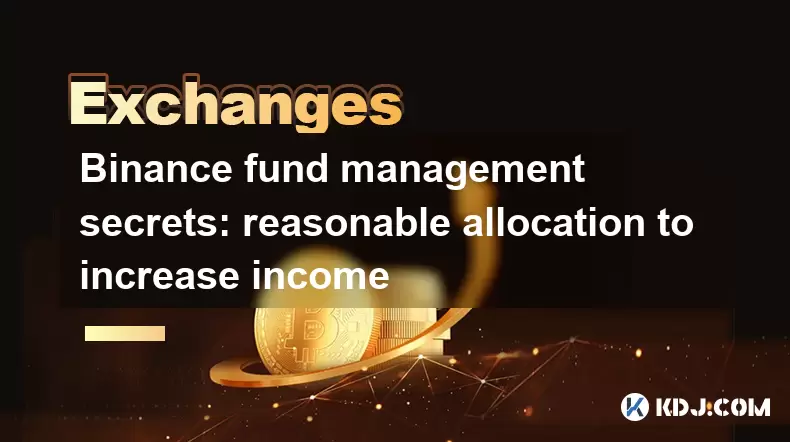
Binance fund management secrets: reasonable allocation to increase income
Jun 22,2025 at 02:29pm
Understanding Binance Fund ManagementBinance fund management involves strategic allocation of your cryptocurrency assets to optimize returns while managing risk. The key to successful fund management lies in understanding how different investment options on the Binance platform can be utilized to create a diversified portfolio. This includes spot tradin...
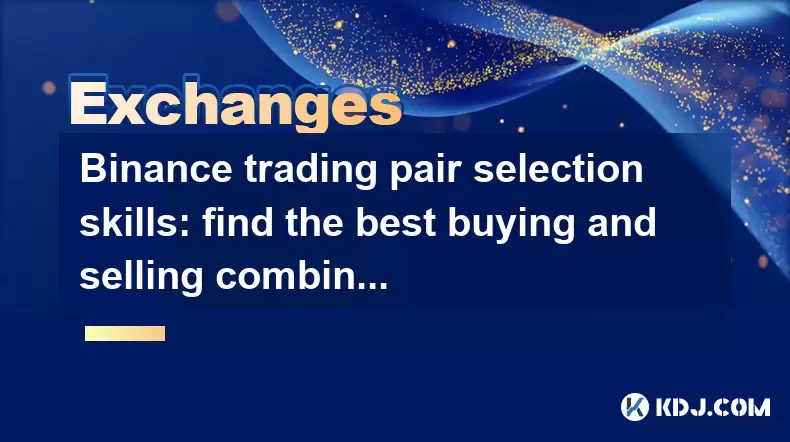
Binance trading pair selection skills: find the best buying and selling combination
Jun 23,2025 at 02:49am
Understanding the Basics of Trading Pairs on BinanceBefore diving into trading pair selection skills, it's essential to understand what a trading pair is. On Binance, a trading pair refers to two cryptocurrencies that can be traded against each other. For example, BTC/USDT means Bitcoin is being traded against Tether. Each trading pair has its own liqui...
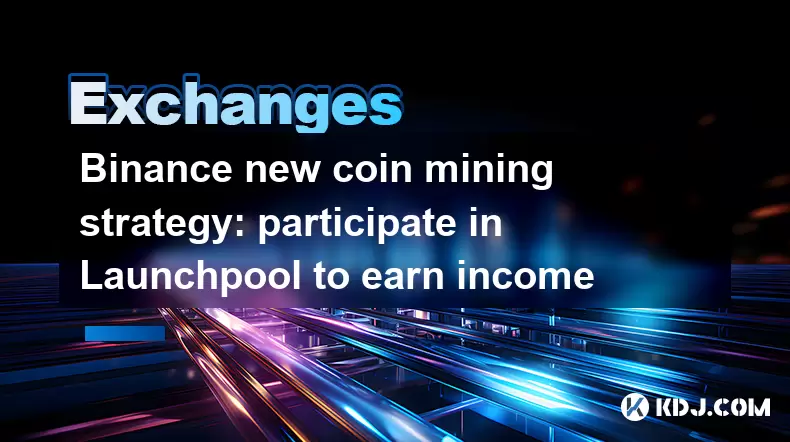
Binance new coin mining strategy: participate in Launchpool to earn income
Jun 23,2025 at 11:56am
What is Binance Launchpool and how does it work?Binance Launchpool is a feature introduced by the world’s largest cryptocurrency exchange, Binance, to allow users to earn new tokens through staking. This platform enables users to stake their existing cryptocurrencies (such as BNB, BUSD, or other supported assets) in exchange for newly launched tokens. T...
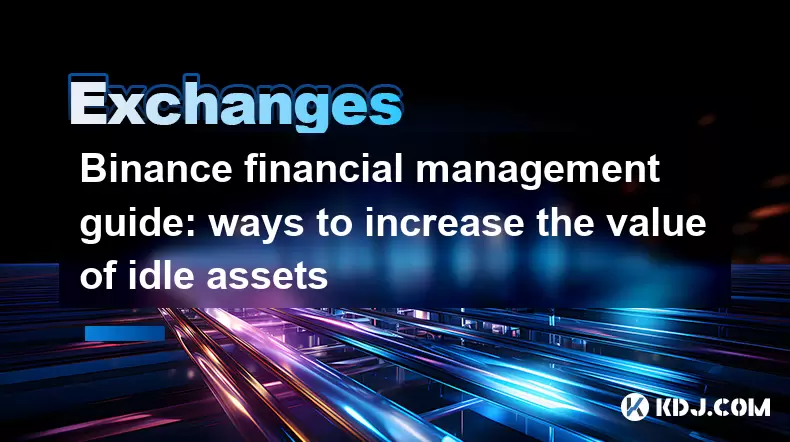
Binance financial management guide: ways to increase the value of idle assets
Jun 19,2025 at 11:22pm
Understanding Idle Assets in the Cryptocurrency SpaceIn the fast-paced world of cryptocurrency, idle assets refer to digital currencies that are not actively being used for trading, staking, or yield farming. Holding these funds in a wallet without utilizing them means missing out on potential growth opportunities. Binance, as one of the leading platfor...
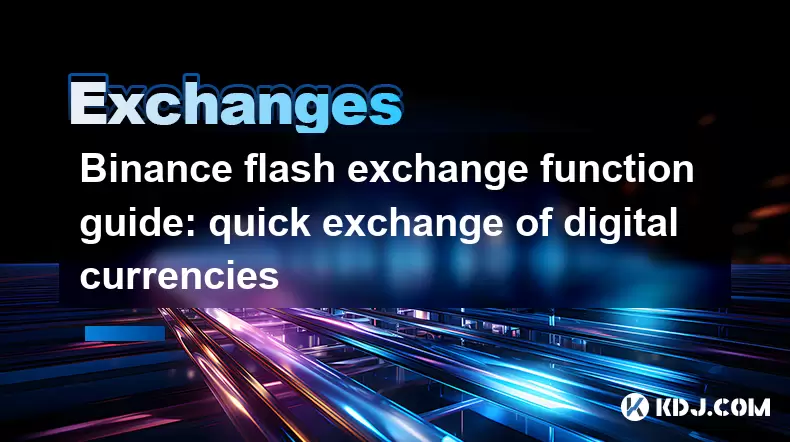
Binance flash exchange function guide: quick exchange of digital currencies
Jun 23,2025 at 12:29pm
What is the Binance Flash Exchange Function?The Binance Flash Exchange function is a powerful tool designed to allow users to instantly swap between supported cryptocurrencies without the need for placing traditional buy/sell orders. This feature simplifies the trading process by offering a direct exchange mechanism, eliminating the requirement to conve...

Binance spot market analysis: seize the best time to buy and sell
Jun 19,2025 at 04:56pm
Understanding the Binance Spot MarketThe Binance spot market is one of the most popular platforms for cryptocurrency trading globally. It allows users to trade digital assets at current market prices, making it essential for traders aiming to buy low and sell high. Unlike futures or margin trading, spot trading involves direct ownership of the asset aft...

Binance fund management secrets: reasonable allocation to increase income
Jun 22,2025 at 02:29pm
Understanding Binance Fund ManagementBinance fund management involves strategic allocation of your cryptocurrency assets to optimize returns while managing risk. The key to successful fund management lies in understanding how different investment options on the Binance platform can be utilized to create a diversified portfolio. This includes spot tradin...

Binance trading pair selection skills: find the best buying and selling combination
Jun 23,2025 at 02:49am
Understanding the Basics of Trading Pairs on BinanceBefore diving into trading pair selection skills, it's essential to understand what a trading pair is. On Binance, a trading pair refers to two cryptocurrencies that can be traded against each other. For example, BTC/USDT means Bitcoin is being traded against Tether. Each trading pair has its own liqui...

Binance new coin mining strategy: participate in Launchpool to earn income
Jun 23,2025 at 11:56am
What is Binance Launchpool and how does it work?Binance Launchpool is a feature introduced by the world’s largest cryptocurrency exchange, Binance, to allow users to earn new tokens through staking. This platform enables users to stake their existing cryptocurrencies (such as BNB, BUSD, or other supported assets) in exchange for newly launched tokens. T...

Binance financial management guide: ways to increase the value of idle assets
Jun 19,2025 at 11:22pm
Understanding Idle Assets in the Cryptocurrency SpaceIn the fast-paced world of cryptocurrency, idle assets refer to digital currencies that are not actively being used for trading, staking, or yield farming. Holding these funds in a wallet without utilizing them means missing out on potential growth opportunities. Binance, as one of the leading platfor...

Binance flash exchange function guide: quick exchange of digital currencies
Jun 23,2025 at 12:29pm
What is the Binance Flash Exchange Function?The Binance Flash Exchange function is a powerful tool designed to allow users to instantly swap between supported cryptocurrencies without the need for placing traditional buy/sell orders. This feature simplifies the trading process by offering a direct exchange mechanism, eliminating the requirement to conve...
See all articles
























































































